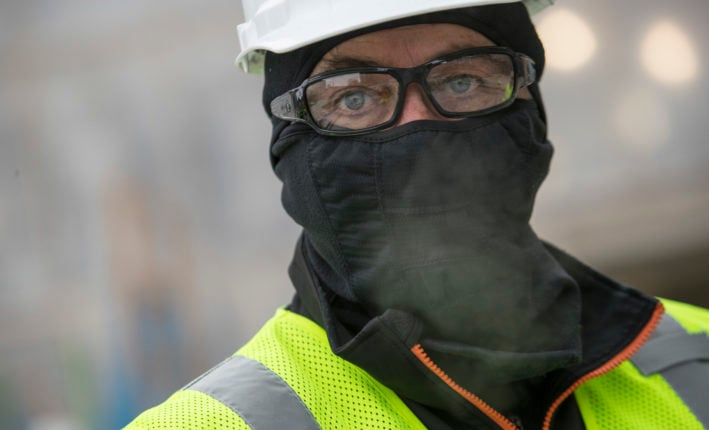
When you think about the weather getting colder especially in the South, you might get excited thinking about all the things that you can do outside and not feel so hot. However, if you are thinking about a commercial painting project involving any exterior surfaces, you might wonder it ever gets too cold to paint, and if cold temps effect the quality of your job site.
The answer to this is a definite yes! Even though the Southern United States does not get as cold as it does in other parts of the nation, there are still guidelines that must be followed so that the application adheres correctly.
How cold is too cold?
There have been many improvements over time within the paint manufacturing community. Some of these improvements include changing commercial paints and coatings to be more environmentally friendly and the conditions in which they can be applied.
The definition of cold weather painting is anywhere between fifty to thirty-five degrees. With the advancements in acceptable temperature ranges, there are now paints and coatings that can be used in temperatures as low as thirty degrees. There are even some paints that can be applied in temperatures as low as zero, which is pretty amazing!
Things to consider
Even though you can use paints in low temperatures, there are still other factors that must be considered before you start your painting project.
Manufactures have instructions on what conditions paint and coatings should be applied in so that it does its job. When the directions are not followed correctly, it can lead to improper coverage and your substrate to break down quicker.
Some of the steps that should be taken are:
- Temperature of Commercial Substrate – This is extremely important as the surface needs to be warmer than the air temperature. To be able to paint anything, it should be at least five degrees warmer than the level of the point of dew. It should be noted that you will be able to get to work quicker on darker surfaces than those that are of a lighter shade during colder times, as the darker colors hold heat better than those that are lighter. One of the things that you must have to finding out what the temperature of your substrate is, is an infrared temperature measurement tool. This particular tool will help you to know if you will be able to paint right away, or if you will have to wait a while for it to get warmer.
- Type of Commercial Substrate – Many different kinds of surfaces can be painted on in cold weather, which includes: aluminum, brick, masonry, stucco, vinyl, and wood.
- Dampness of Substrate – As stated within the above point, you will need to make sure that the dampness level is as low as possible versus the temperature of the substrate for the paint to adhere to the surface. You will need to check to make sure of these levels before proceeding to paint. If there is too much moisture on or within the substrate, it can make the paint bubble up and not stick to its surface.
- Length of Drying Time – You will need to make sure that you have sufficient time for the paint to dry, so you will need to know how long you have before the weather gets too bad. If it looks as though you will not have adequate drying time, then you should reassess and start the job at a later time.
- Number of Layers – The more layers that are involved, the more time it will take. Knowing how many coats that the job will require will help you to be able to judge if you will have the necessary cleaning, application and drying time that it will take to complete the task.
- Range of Daylight – During the winter months, the range of daylight is much shorter than during other times of the year, so you will need to consider this when painting your commercial structure.
- Weather – Making sure to look over the forecast for the period that you have to complete the commercial painting job is a must! Once you have evaluated all of the information that is needed for your project, you will have to make sure that you have the right temperatures.
If you take the time that is needed and not rush the outcome, you should be able to deal with low temperatures and get a fantastic result.
Always make sure that you review and know the manufacturer requirements for the paint you choose. If at any time you are unsure, contact your paint supplier.
If you are not up to the task of tackling a cold weather commercial painting project, then contact a proven and reliable contractor. They should be more than happy to help you out and get the job done right.






